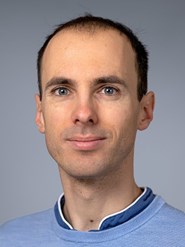
Associate Professor in Mathematics. Main research interests: extremal combinatorics and discrete probability.
Short bio
Research areas
I work in extremal combinatorics and discrete probability, especially extremal graph and hypergraph theory and random graphs.
Extremal combinatorics is concerned with a certain kind of optimisation problems. In essence, it is the mathematics of making the best choice possible in a discrete context and showing no better choice exists. More helpfully perhaps, a typical problem in extremal combinatorics is to maximise or minimise a parameter inside a finite structure subject to some restrictions. For instance: what is the smallest number of weighings on a pair of scales needed to identify a counterfeit coin? how do you win high-dimensional versions of tic-tac-toe? what is the most robust graph you can build with a given number of edges?
While such problems may look like mere puzzles at first glance, they have a great variety of applications within mathematics, statistics and computer science, in particular when it comes to designing optimal structures or algorithms with respect to some parameter or constraint. Progress in extremal combinatorics often occurs at a methodological level: to solve one particular problem, one must develop a new technique which then turns out to be applicable in many other situations. Extremal combinatorics is a highly active and exciting area of research, which has seen some major developments in recent years, and in which there are still a great many open problems to be solved.
My work in discrete probability for its part focusses on random graph models. Motivation for studying such models stems from a desire to gain a rigorous understanding of the behaviour of real-world networks such as social networks, communication networks or neural networks. While these networks may be governed by deterministic principles, they are too large and too complex to be analysed directly. A solution is to model them mathematically as random graphs, encoding statistical information about the real-world network as a probability distribution for a random graph. The typical behaviour of the random graph then provides a good approximation for the actual behaviour of the network. This paradigm underpins the field of statistical physics, which has widespread applications in economics, computer science, biology, physics and chemistry. Again, this area of research is very much alive and active, with a wealth of major advances and new open questions emerging in the past few year
Other information
Thesis and research internship supervision
I very much enjoy supervising bachelor's theses, master's theses and research internships in discrete mathematics and probability theory. I have a wide selection of possible topics to suggest to students. Current potential projects include Maker-Breaker percolation games , Subcube intersection graphs and Mixed degree conditions for hypergraphs , but I have a hoard of other problems available to fit a student or research intern's interests.
If interested, please send me an email or come by my office for a chat!